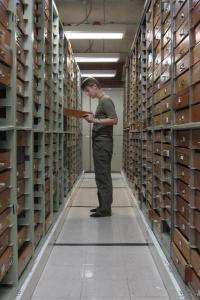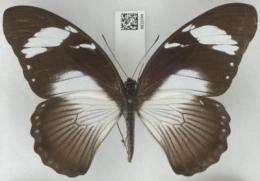Bringing natural history collections out of the dark

In a special issue of ZooKeys, initiated by the Natural History Museum London, Vince Smith and Vladimir Blagoderov bring together 18 papers by 81 authors to look at progress and prospects for mass digitising entire natural history collections.
Centuries of exploration and discovery have documented the diversity of life on Earth. Records of this biodiversity are, for the most part, distributed across varied and distinct natural history collections worldwide. That has made the task of assessing the information in these collections an immense challenge, the largest of which is how to capture specimen data fast enough to achieve digitisation of entire collections while maintaining sufficient data quality.
Now, an effort is underway to digitise major collections to unlock their research potential and provide unlimited access to the public. This series of eighteen articles in the open-access journal ZooKeys examines recent advances in imaging systems and data gathering techniques, combined with more collaborative approaches to digitisation. These provide a snapshot of progress toward the creation of a global virtual natural history museum.
"As a sample of the natural world, these collections underpin our understanding of ecosystems, biodiversity and the sustainable use of natural resources" says Vince Smith, Cybertaxonomist at the Natural History Museum London. "Technical innovations in digitising hardware, software and data interactions are now making it possible to conceive of wholly digital collections, creating a new frontier for natural history research".

Examples of research covered by these articles include a description to efforts digitise 30 million plant, insect and vertebrate specimens at NCB Naturalis in the Netherlands; new scanning and telemicroscopy solutions to digitise the millions of pinned insect specimens held in the Australian National Insect Collection and its European and North American counterparts; citizen science projects being used to crowdsource the transcription of thousands of specimen labels and field notebooks; and new data portals providing central access to millions of biological specimens across Europe.
More information: Blagoderov V, Smith VS (2012) Bringing collections out of the dark. In: Blagoderov V, Smith VS (Ed) No specimen left behind: mass digitization of natural history collections. ZooKeys 209: 1-6. doi: 10.3897/zookeys.209.3699
Journal information: ZooKeys
Provided by Pensoft Publishers











.jpg)






